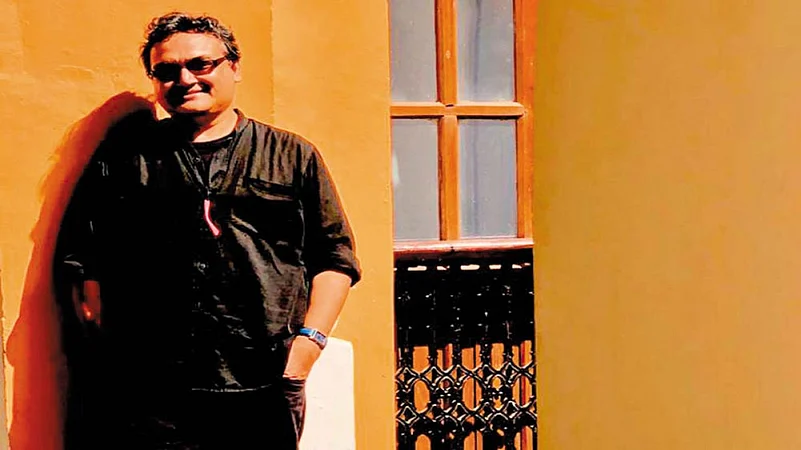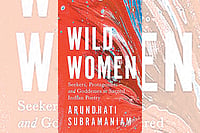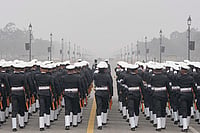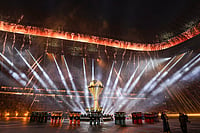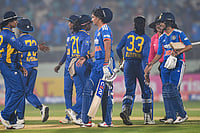All is not dark if poetry can strengthen our resolve to override the coronavirus crisis. Sudeep Sen’s soul-searching, multi-genre book, Anthropocene: Climate Change, Contagion, Consolation, seeps gently into the crevices of our despondency and feeds vital energy into the dying cells of public conscience. An urgent plea for saving the environment, saving the fine human sentiments of empathy and care, and for acknowledging the power and magic of words—this book is one of the strongest statements made on the global pandemic. I value the discerning eye which dwells on minutiae, the brave voice that calls for Love in the Time of Corona, the touch that honours the artefacts in decay. In the theatre of sorrow there is the arc light of hope, making Sen’s poems and prose a pageant of possibility, if only we listen to the music of the universe.
“The Role of the Artist is Not to Look Away”—the Prologue opens with an Akira Kurosawa quote. “Amid all the clamour of public rhetoric and widespread distress, this book is a quiet artistic offering,” writes Sen, 23. When Boccaccio wrote Decamerone after the Black Death in Italy or Camus wrote The Plague about the cholera epidemic in Oran, French Algeria, they used storytelling as the mode, often mythologising the location so as to invoke a larger relevance. Sen has selected poetry (and micro-fiction) as the vehicle of his thoughts and used a variety of poetic forms infused with the vocabulary of science and spirituality. Such poetry is neither an escape nor an emotion recollected in tranquillity—it is the honed, chiselled outcome of dry-eyed sorrow. As Sen confides: “For me, poetry is omniscient, poetry is life, poetry in its widest sense is a way of living.”
The title indicates the content. Anthropocene is understood as “the current geological age, viewed as the period during which human activity has been the dominant influence on climate and the environment.” Given the angst over air pollution, climate change, GM food, shifting glaciers and threats of water famine, the deepest concerns of the millennium are not restrained by political boundaries. As though following the same principle of borderlessness, the pandemic has engulfed the world. Somewhat expectedly, Amitav Ghosh is cited by Sen and a poem Disembodied is dedicated to him:
My lungs fuelled by Delhi’s insidious toxic air /echo asthmatic sounds, a new vinyl dub-remix. / Our universe — where radiation germinates from human follies, / where contamination persists from mistrust, / where pleasures of sex are merely a sport — / where everything is ambition, /everything is desire, everything is nothing. / Nothing and everything.
A consistent feature and an attractive quality in Sen’s poetry is the play of local and global, painting the broad sweeps of universal climate catastrophe domesticated in the neem tree outside his study window or the “sweet Yamuna” overflowing in the monsoon.
The section, Love in the Time of Corona, brings heartache as the poet witnesses the despairing separation of lovers, the grief of those who are mourning their dead, the hopelessness of the migrants trudging towards a rural home. Though media has inundated viewers with pictures of such tragedy, in poetry the poignancy is different—gentler, more nuanced, wise. For a poet, there are concerns about the survival of artists and artisans, of art itself when patronage is impossible and skills may be submerged by a deluge of “practical” decisions. In Black Box, we see an imagined journey collapsing many experiences into a surreal imprint:
Sanity, insanity, sanitised — I give my half-eaten sandwich to a stray animal and insects. Both animal and human reduced to one, on our knees, by the powers that be. Everything is shut — door, window, sky, auditorium, stage, audience — no one is spared. // What does an artist do? Storytelling, dastangoi — stage, kings, ghungroos — story of a sparrow, wise folk tales — anything, any tales to keep our imagination intact, alive.
Sen’s unconventionality is visible in his claiming prose, as above, to be a legitimate expression of poetic sentiments. This is where Sen’s interest in classical traditions of India and the fluid lines between poetry and prose, lyric and dance come into view. A connoisseur of music and dance, his lines flow easily from one genre to another while being entirely aware of the discipline of Western prosody where necessary. Sometimes Sen gives a virtuoso performance as in the smartly sharp Haiku that appear often in this collection—Vaccine 2, being an example:
untested vaccine
jabs in to an unwilling
arm — black, colour-blind.
If love is a rare luxury in our times, ironically Corona Red (the next section), explores multiple meanings and aspects of Contagion. A visit to Ghalib’s haveli brings out the translator in Sen, posing the challenge of turning Urdu into English, at the same time being the commentator to a signpost in literary history. Ghalib in the Time of Crisis, opens with an epigraph by Ghalib—“If a person becomes accustomed to grief, then grief is erased, so many difficulties fell upon me, that they became easy.”
A pair of perfectly scanned amatory couplets—sher/bayt—looking longingly at each other on facing pages—maintaining distance—cannot mate. In this silent formal dance of matla, radeef, qaafiyaa, makta, beher—there is balletic mirroring—mumurations of measure and metre, love and pain, reality and lie.
The segment titled Atmosphere/Skyscapes takes one by surprise for being presented as a portfolio of exquisite photographs “capturing the skies from exactly the same vantage point” on Sen’s terrace “day after day during the lockdown.” Another experiment, another blend of genres one might say. The ochre light of the sun or the incandescent glow of the moon evoke images that erupt into words, sometimes of the poet, and sometimes, maybe, of the viewer of this translucent skyline. Quite naturally, the pages transit to the next unit titled Holocene, denoting “the present epoch”. Here personal poems written at various places, remembering friends, writers, and times spent together and the resonance of cherished conversations. Nobel laureate Derek Walcott has been a presiding figure over Sen’s work—so a tribute to him is expected, as in Driftwood:
Part of the bannister-railing is absent
in spite of its strong metal-rivet moorings.
Termite-eaten, consumed by the sea,
I can see its woody skeleton float faraway
among the surf, its salt-scarred coat
tossing and struggling to keep afloat
against the waves’ incessant lashing.
In another poem, Witherstone, set in the English landscape, he writes: “How topography fine tunes our sensibility, / landscape reshapes our psyche — / how everyday banalities of potatoes, animal farm, persistent rain can soothe our senses to calm —
Remembering the dancer, Aditi Mangaldas “draped blood-red, on black stage-floor”; recalling “Holocene’s carbon-footprint” on the burning ghats of Varanasi; reminiscing about the “incandescent love” of an absent beloved; people fill the landscape of the mind while a pandemic-hit city ominously carves the backdrop.
The intertexuality of Sen’s poems becomes more apparent as one turns the final pages of the book. Meditation and Prayer, the means to finding Consolation, resides in the perennial spiritual practices. Prayer Flag, among Sen’s widely anthologised poems, offers the sign language of supplication to the idea of god. But meditative freedom must be sought in yoga, the science of breathing—surely a painful comment on the oxygen-deprivation of coronavirus patients: Sound of collective breath — / invisible song. // Thinking of people /one loves and hates — we forgive.
Using his training in science and the arts, as well as his sharp intellect and understated erudition, Sen positions poetry as an instrument of healing—the wounds of the earth, as well as the human soul. Sen’s Anthropocene holds a mirror to our times. It is simultaneously brilliant, disturbing and calming—a literary tour de force that will surely be among the most defining books about the global pandemic and climate change.
(Lal, professor and critic, is a member of the Sahitya Akademi’s English Advisory Board)






